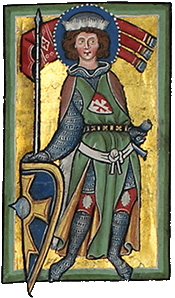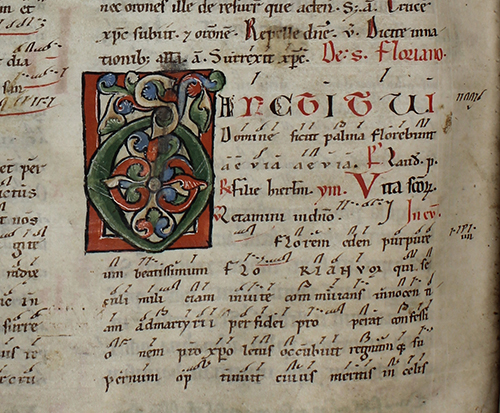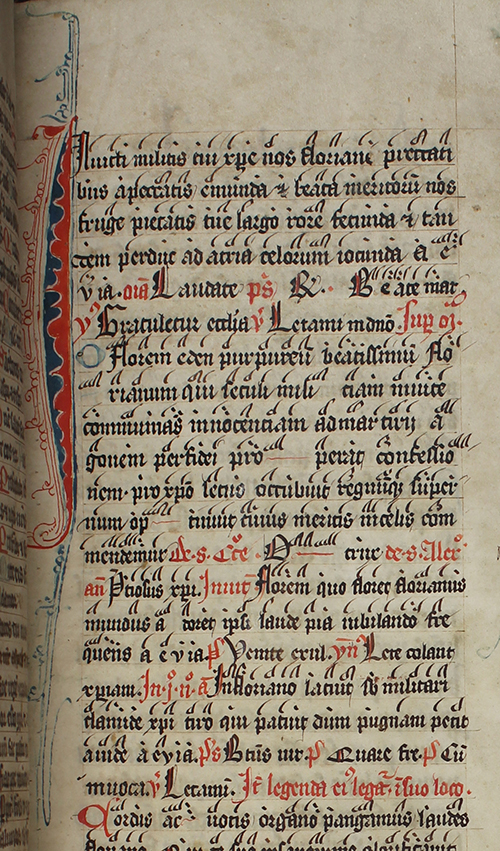The chants of the special office for the Liturgy of the hours in honour of St. Florian on May 4th originate from different periods. The oldest surviving versions dating from the 12th and 13th centuries are found in the original part of the breviary XI 384, and may have been written down at the beginning of the 13th century (staffless neumatic notation, compare Fig. 1). The readings were taken from the Passio Floriani. The chants depict events described in the Passio Floriani, but in a different wording thus forming a second thread. An expansion, or rather restructuring of the office is noticable at the end of the 13th, and the beginning of the 14th century. The veneration of St. Florian has found new impetus in the period of the rebuilding of the church, or respectively the consecration in 1291. The high point of the veneration of St. Florian was reached with the translation of the saint's relics from Krakau to St. Florian in 1323 (compare Fig. 2).The special office for the Octave of the Feast of St. Florian originates from approximately the same period. The melodies for these texts have not been recorded. The office is a part of the breviary XI 416.
In 1649 a new, mostly rhymed office for the patron saint of the monastery was made by the provost of St. Florian, David Furmann (1667-1689). The autograph with the texts is preserved in a little booklet (XI 441). Furmann's office, together with the proper of St. Florian, was incorporated in the printed breviary from 1886, and prayed until the 1960s.
A transcript of the preserved chants in honour of St. Florian are found in modern notation in a study from Robert Klugseder. A synopsis of the texts of all the chants is found in this table.

Saint Florian in the Gradual-missal III 205A (fol. 98r), about 1320, so called „Marbach-Missale“

Fig. 1: Neumed breviary XI 384, vespers of the Florian historia, beginning of the 13th cent. (fol. 329v)

Fig. 2: Neumed breviary XI 384, expansions of the Florian historia, beginning of the 14th cent. (fol. 65r)